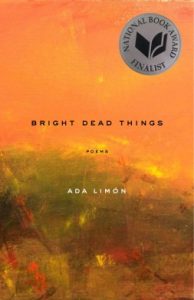Sarah Gerard’s essay “Going Diamond” is about consumerism and development. These themes, which are national issues, are delivered to the reader through Gerard’s account of her parents’ time with Amway and also through fictionalized home-buying scenarios that follow a couple who have “gone Diamond.”
The home buying scenes are the most direct in delivering Gerard’s points. They increase in worth and the final “fictionalized composite account” is a tour of an exclusive club. These scenes are purposeful. They place consumerism – the nitpicking of elaborate homes – against the natural world on which the homes are developed. This is mentioned throughout the essay. On page 81, the pre-development land is described by the realtor as “very marshy.” One of the homes looks over a retention pond (81). The most expensive community is flooding due to rain, and while looking at the home, they notice “a flock of ibis has congregated around the standing water.” (101) The natural world and developed world are at odds. It’s in this home that the realtor also repeatedly mentions hurricane shutters. There are also several mentions of friends and family in New Orleans, and I wonder if Gerard is furthering her point about impending natural disaster through these little moments.
Consumerism is another topic in this essay. Again, the houses increase in worth and extravagance. Gerard says, “In Amway, there’s no such thing as contentment.” (77) Preceding this line is an “economic snapshot” of her “solidly-middle class” upbringing. Gerard ends this section with the following line: “We were happy, until we were told we could be happier.” (78)
More, more, more is the underscore of this essay. Brought to you by Amway and the American Dream. (83) Buy, buy, buy.(80)
A few other notes. On page 84, Gerard includes a footnote that the price of tickets to Amway functions have gone up. This makes it a current issue. She is not afraid to be sarcastic in this essay, and she uses this voice when talking about working hard to achieve the American Dream. (85) On page 89, Gerard shares an unpleasant portrait of herself as a child, wherein she is completely spoiled and proud of it. She has fallen victim to the more is more mentality too. She shares this to make herself more open, reliable, and relatable to the reader. She is not scolding the reader; she’s a consumer too. Gerard also, for lack of a better term, skewers the DeVos family. Rich DeVos is the cofounder of Amway, and his daughter-in-law is now the highly controversial US Secretary of Eduction. Gerard ends the essay by clouding consumerism, development, religion, and politics into one beast – which it truly is on both a national and local level.

 Over the weekend. while preparing my own poems for workshop, I read that writing poetry, more so than other writing genres, is about finding the “just right word.” I often feel, after having read a poem by Ada Limón, that she is more than proficient in doing this. Not only does Limón choose the “just right word,” her composition of those words is stunning.
Over the weekend. while preparing my own poems for workshop, I read that writing poetry, more so than other writing genres, is about finding the “just right word.” I often feel, after having read a poem by Ada Limón, that she is more than proficient in doing this. Not only does Limón choose the “just right word,” her composition of those words is stunning.